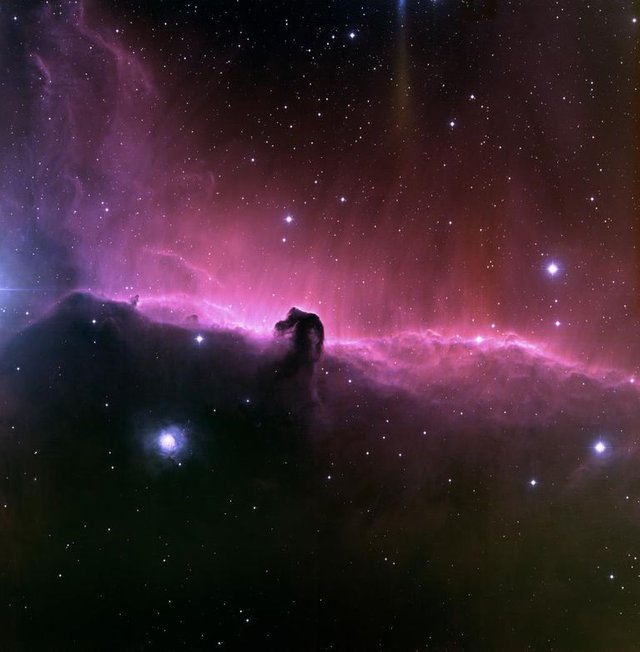What you should look out for in the Winter Night Sky
Winter has firmly settled upon the Northern Hemisphere. As everything transitions into the dark and cold season we will see many changes. Non winter oriented trees will become completely leaf-less, rain turns to snow, and the air is cool.
But something else also changes as we enter this time of the year, the sky shifts around throughout the year to have different things show up at certain times. And the Winter happens to contain some of the best things out there. So here are a few of them.
-Naked Eye Stuff
The Winter is definitely not lacking in impressive constellations and bright stars. Among the top ten brightest stars that can be seen North of 30 degrees, 6 of them are primary winter stars, with 2 for the Summer, and 2 spring stars.
And on top of the stars of the winter being intrinsically brighter, they also appear to shine more due to the lack of humidity that comes with cooler air.
But again, the winter stars are also just intrinsically brighter. One reason for this is because when facing out of the Milky Way, we look directly into the Orion arm, a close region of star birth. So there are a lot of super bright stars within a close proximity.

(Toms eye on the sky)
Needless to say, the winter has plenty of beautiful stars and constellations. Without question the best of them is Orion, comprised of three fairly bright stars in a row making up the belt, and two very bright stars, one red, (Betelgeuse), and one blue, (Rigel). But Orion is just one of many distinct constellations standing out this season. Others like Gemini, Auriga, Canis Major, and Canis Minor just to name a few.
What really stands out about naked eye stargazing in the winter is the variety of bright stars concentrated within one area. Bright stars are beautiful because they are uniquely colorful. Rigel has a strong blue hue, Betelgeuse is dim red to contrast, Capella is a distinguishing yellow, Pollux has a nice orange, and Procyon is piercingly white, perfectly balanced in between yellow and blue.
And among all the colorful bright stars Sirius stands out as a more classic looking star with its light blue coloration. But it shines so enormously bright it ranks as the brightest star outside our solar system. And it really deserves that title, the word comes from the Greek word for scorching. The star shines twice as bright as the runner up star Canopus, and 4 times brighter than Arcturus, the seconds brightest star visible north of 30 degrees.
 )
)
(Orion constellation, ESO)
-Telescope Stuff
At this point I've probably gone off on some tangent about the Orion Nebula at least once every 5th article. It is unquestionably the pinnacle of Winter sky telescope objects. Bright and colorful, any telescope of 4 inches or more should be able to see it in decent conditions.

Orion nebula by Astrobackyard
But there's more, along with Orion the Winter sky harbors a few other nebulous targets. The Crab nebula is a famous example. It's a bit tough to see in light-polluted region, but when it is visible it usually appears as a small oval with a few tendrils going out and all over. But of course what makes it special is that it isn't just any normal nebula, it's a remnant from a supernova that was first spotted nearly a thousand years ago and recorded by ancient Chinese astronomers. Who described it as a "guest star". It now stands strong as an 11 light year long explosion of cosmic proportions.

The crab nebula, Espenak, Astropixels.com
Although they can both be seen by eye, the Beehive cluster and the Pleiades cluster are best viewed with binoculars or a telescope. The Pleiades is the most famous open cluster of all, a few stars by eye will turn into a dozen through binoculars, and hundreds through a telescope. A few bright blue stars make up the main light output, there's also a nice little chain of five stars lined up like one of those 2D quick bird drawings, like a check mark with equal sides.
The Beehive cluster is a bit wider, hosting dozens of stars with one particular star outshining the rest by a solid margin, the famous Aldebaran-- a red giant placing as the 14th brightest in the sky.
And just to keep the star thematic going, the star known as Castor is located in Gemini and is actually a total of six stars. Yes you read that correctly, six. However only two provide most of the luminosity, but those two can easily be resolved when viewed with at least 70x magnification.
And when talking about the more challenging things. The Horse head nebula and flame nebula can be tricky. The horse head in particular is a tough one because it is comprised of cold gas, thus not glowing. But there is a background of glowing gases. Giving it a remarkable appearance.

Travis Rector, National optic Astronomy observatories
Along with that, the winter has two famous galaxies sitting right next to each other. They are pretty much the only of their kind though since galaxy season is in the spring. But m81 and 82 sit close to one another both visibly and in real life. They are also rather close to us, just over 10 million light years.One is a typical spiral, and the other is a irregular spiral that is also undergoing a starburst phase, meaning it is creating stars very quickly.

Espenak, Astropixels.com
So get your gloves on, wrap up in numerous layers, and don't ever forget your hat, we've got some sky searching to do.
Congratulations @astronomyizfun! You have completed the following achievement on the Steem blockchain and have been rewarded with new badge(s) :
Click here to view your Board
If you no longer want to receive notifications, reply to this comment with the word
STOP